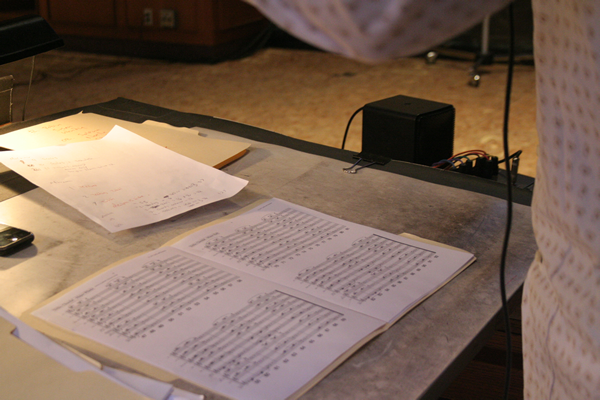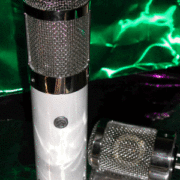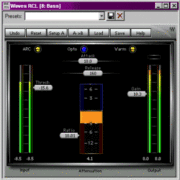PLEASE NOTE: This article has been archived. It first appeared on ProRec.com in September 2009, contributed by then Editor Brent Randall. We will not be making any updates to the article. Please visit the home page for our latest content. Thank you!
In a recent announcement, sample library developers, Cinesamples, announced a brand new upcoming sample library called Hollywoodwinds. Hollywoodwinds is a Kontakt 2/3 woodwinds sample library with an emphasis on Hollywood-style film scoring. While Hollywoodwinds is not set to be released until October 1st, we’ve got the scoop.
If you are a John Williams fan, and have an interest in film composition, Hollywoodwinds is for you. And we have exclusive pre-release information to whet your appetite for this stellar library! We have the what, the how, the why, and a couple of goodies along the way. You may even get the chance to win a copy for yourself, so keep reading!
In case you want to jump right in and discover all that Hollywoodwinds has to offer, we are here to help. Here, and ONLY here at ProRec.com, you can download the full PDF manual for your viewing and printing pleasure. Learn all about Hollywoodwinds before it’s out, including information on the included patches and mappings.
Hollywoodwinds is a sample library focusing on woodwind ensembles, scales, textures, rips, and much more, along with some more “traditional” patches like tutti and octave voicings for you to play along with or in between the rest of the included elements. And everything is recorded in two microphone perspectives for you to mix as you wish!

Since this isn’t your typical, straight-ahead woodwinds library, we asked the guys at Cinesamples for a bit more information on how Hollywoodwinds came to be:
PR: What was your motivation for creating Hollywoodwinds?
“Like most of our other libraries, usually the idea spawned after a period of frustration. Using our own libraries (and we own a ton of commercial libraries), we couldn’t make the woodwinds sound good while playing all that fast high stuff they play. So we decided the only way to make this happen was to make our own library.”
PR: It seems the film scoring landscape has changed a bit. More times than I can count lately, woodwinds have held such a minor role for film composers and modern orchestrators. What happened?
“When using samples became the primary tool of composers, it seems the woodwinds made a departure from the scene – only showing face in select settings. A large part of this was the fault of the sampling companies. There just weren’t the proper samples made for them to fulfill their role in large ensemble works.”
PR: Hence the creation of Hollywoodwinds, right?
“Yes”
PR: Ok, so Hollywoodwinds brings the woodwinds back into the scoring universe, but what about the oh-so-often forgotten piccolo? You did include this instrument, right?
“We decided to include the piccolo because you just need to have it to allow the woodwinds to compete with the orchestra. The piccolo is the critical instrument of the choir. It is one of the few instruments which, as a soloist even, can clearly speak when all the other instruments are hacking away loudly on their parts. Additionally, the piccolo seems to really lend itself to the authentic Hollywood Sound we were after. It would have been impossible without it to get the sound we wanted.”
PR: For any aspiring film composers out there who may be wondering why this should matter to them, how would you say the woodwinds fit into the big picture?
“Well, for Hollywood action music, they are doing lots of things like doublings, trills, arpeggios, scales, tight motif-like figures, rips, and the like. They are a choir of precision and of lucidity. They have the fastest and most nimble instruments to play, and serve the composer best by playing in this fashion, which of course is what Hollywoodwinds was created for.”
As a heavy sample library user myself(with a special love for all things orchestral), I have noticed the strong leaning towards solo instruments. This isn’t the case with Hollywoodwinds. Instead, it focuses on probably one of the hardest areas of orchestral composition, which is combining the woodwinds PROPERLY. This includes proper voicing, balance, and creating just the right “stack” of sounds. We wanted to know just how accurate Hollywoodwinds would be:
PR: Were the samples recorded as ensembles, or are the ensembles built intelligently inside of Kontakt?
“Everything was recorded live with all the players in place – it just sounds better this way. The players play more organically hearing the other musicians, and the crew can hear the mix without imagining the missing parts. The crew was very conscious during the sessions to try and keep the levels acoustically even. In other words, notes were being given to the lead clarinet; “a little bit less here” and the piccolo; “can you bring the end of that line out a bit?” and such. We tried to balance it with internal dynamics and not Pro Tools.
By the way, when researching the library we asked Tim Starnes, our mixer, about the physics of sound you miss out on by having the instruments recorded separately, and he said this:
“There are complex constructive and destructive interferences in frequency that occur when many of the same instrument are playing the same note in the same room. The space responds differently as well. It is not the same result as overdubbing solo instruments at different times in the same room. “
Hollywoodwinds pays special attention to tuning and “shapes” for the various scales and other articulations. Also, multiple variations of every scale are included, and all synced to your host tempo so you don’t have to worry about matching anything.
To give you an idea of what the musicians would see in a normal session while recording Hollywoodwinds, you can see an actual score sample from the sessions off to the right. This is just one example of the large amount of recordings that were made for Hollywoodwinds.
But Cinesamples have taken this a step further by including a notation view WITHIN the library itself, which stands to play a huge role in understanding what is going on under the hood.
This notation view actually changes based on what you are playing(different shapes, tunings, etc.), and is a first in the sample library world as far as we are aware.
PR: The notation view is interesting, and I haven’t seen it before. I imagine Hollywoodwinds could be a great educational tool because of this. Was this part of your thinking behind this feature?
“The notation view relies on Kontakt 3.5 or higher to work. It was something that was impossible before the update, but we decided we just needed to include it. Aside from us being sheet music nerds, we saw a fantastic opportunity to help others visualize woodwind orchestration via this method. Even though it was very painful to implement, we think in the end its totally worth it.”
More information on this feature can be found in the manual(you HAVE downloaded the manual already, haven’t you?).
But there is so much more to Hollywoodwinds, so we wanted to give Cinesamples an opportunity to share more about what makes Hollywoodwinds unique:
PR: What does Hollywoodwinds do for film work that other more “traditional” libraries don’t necessarily do?
“Mainly, its a very accurate and fast tool. With very few midi tracks, you can tastefully articulate the entire ensemble very quickly and effectively. The inherent concepts and programming do most of the heavy lifting, leaving the composer free to worry about musicality. When you need a custom line, use one of the keyboard patches to fill in the gap. This technique of tempo locked pre-records and identical sounding keyboard patches is extremely effective to lending life to your piece. Also, our built in Hollywood orchestration in the keyboard patches (as well as everything else) is something that hasn’t been done before and is fantastically realistic (listen to the triad patch shine in Patti/Barry’s demos). “
PR: What is the most innovative part of Hollywoodwinds in your opinion?
“Most likely the concept itself combined with the programming, its very intelligent and encourages speedy workflow. The sound is kind of fun and might lead you down a path you might not have imagined beforehand. “
As an added bonus, we have a way for you to win a copy of Hollywoodwinds for FREE! It’s simple. All you need to do is to follow Cinesamples on Twitter!
http://twitter.com/cinesamples
That’s it! Become a follower of Cinesamples by going to the link above, and you are automatically entered in the drawing to win a FREE copy of Cinesamples. The drawing and winner will be announced Wednesday, September 30th, the day before the release of Hollywoodwinds, so don’t waste time. Get over there and get yourself in the running!
Hollywoodwinds is set to be released on October 1st with an introductory price of $299, downloadable, from http://www.cinesamples.com



